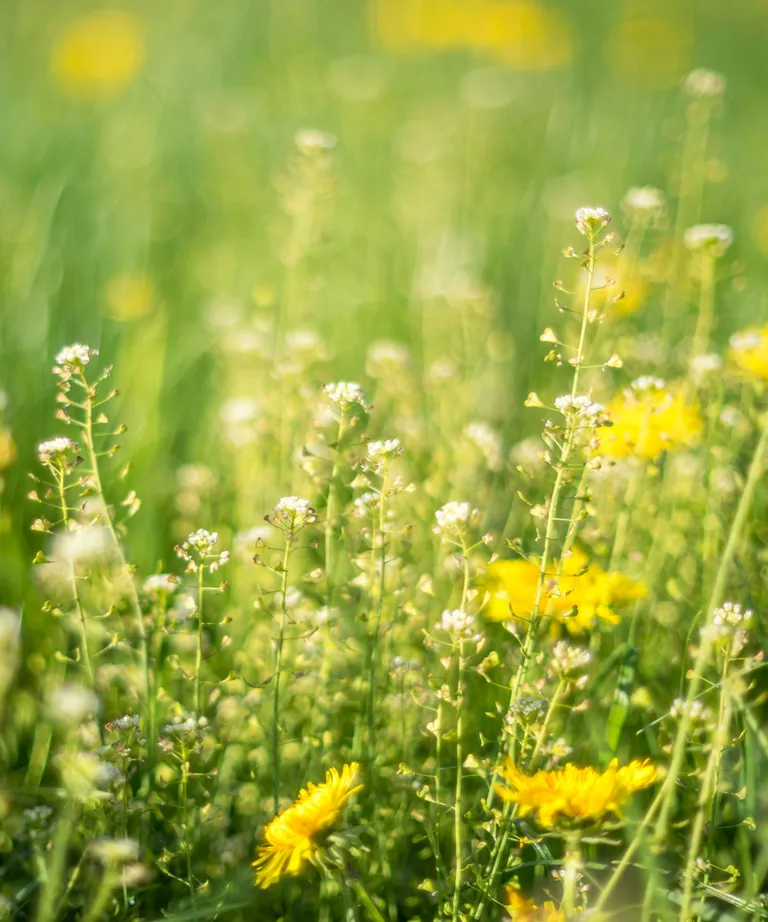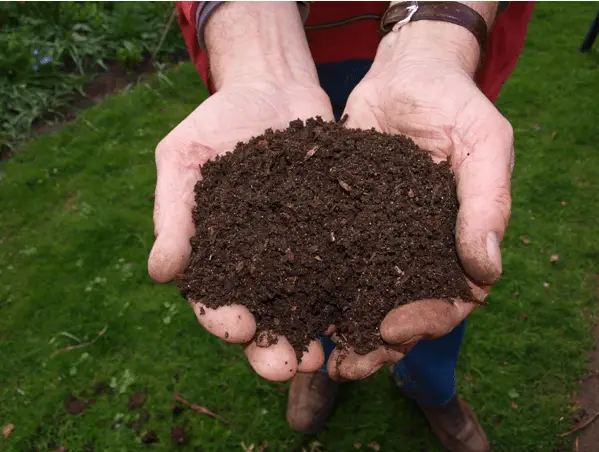What Fertilizer Numbers to Use in Spring?
Last Updated on March 28, 2025 by Duncan
After the long, cold winter, you are going back to the growing season. Spring is here, and now is the ideal time to start your lawn fertilization program and offer your turf a boost of nutrients.
Spring is a critical time for your grass as it emerges from its hibernation. Environmental pressures, such as dramatic temperature changes, will impact your grass’ general health and growth. After your grass has thawed in the spring, it will be more susceptible to illnesses, bugs, and weeds.
A high-quality, effective, and user-friendly spring fertilizer helps prepare your lawn for the coming year. Your goal is to give your lawn the best possible start in life, saving you time and energy on future herbicide, insecticide, and fungicide applications. A weak, shallow-rooted grass struggles to compete with weeds and pests. And you don’t want this.
For a great experience, conduct a soil test before fertilizer application to determine which nutrients your grass requires.
Once you have the data, you can choose a spring lawn fertilizer that matches your grass’s nutrient needs. Doesn’t that make a lot of sense?
What fertilizer numbers to use in spring
Choosing the appropriate NPK ratio is one of the most critical components of picking the best spring fertilizer for your lawn. The three digits on a fertilizer bag indicate the percentage of nitrogen (N), phosphorus (P), and potassium (K) content.
Each macronutrient has a distinct purpose, and your grass type, soil condition, and soil test findings determine the appropriate ratio.
Nitrogen (N) is a vital component of chlorophyll, the plant nutrient that gives your lawn its vivid green color. A grass without enough nitrogen can appear yellow and dry.
Nitrogen is vital in the spring because it encourages lush growth and leaf development. To help your grass develop following dormancy, look for fertilizers with a higher nitrogen content, such as 16-0-8 or 20-2-3. Nitrogen also helps grass recover from winter stress, promoting a lush, uniform lawn.
Phosphorus (P) promotes root and shoot development, ideal for newly planted lawns or turf with shallow roots. In most situations, established lawns require less phosphorus and thus use fertilizers with low or moderate phosphorus levels, such as 14-7-14.
Potassium (K) improves stress tolerance and overall wellness. Potassium helps your grass tolerate temperature variations, soil salinity, drought, and disease. A spring fertilizer with a moderate potassium level, such as 12-0-24, can help your grass survive the seasonal change and thrive in the coming months.
When should you apply your fertilizer in Spring?
The optimal time to begin feeding your grass is usually in mid-spring (late March to April), before the summer heat when the soil temperature hits around 12C.
When the soil warms up, the lilacs blossom, and the grass grows. Remember to apply fertilizer when the soil is damp or if rain is forecast.
Fertilizers are less efficient in dry soil and can scorch plant roots. Avoid using spring/summer lawn fertilizers beyond September because they contain too much nitrogen for fall use, promoting green leafy top growth at the incorrect time of year. Your grass may become vulnerable to winter colds, bugs, and disease.
Why you should undertake soil testing
For the best grass-growing circumstances, your soil’s pH should be neutral, ranging from six to seven. Use correction agents to raise or lower the pH level if your soil is overly acidic or alkaline.
Which fertilizer should you apply? Granular or liquid?
Lawn fertilizers come in two varieties: granular and liquid. There is no right or wrong fertilizer to use, but you should go with granular fertilizers for DIY lawn enthusiasts.
They’re simple to store, distribute, and slow-release, so nutrients break down over time. You only need to apply granular fertilizers once every four to six weeks.
Liquid lawn fertilizers require accuracy, but they are highly effective and provide a consistent application. They also offer speedier results.
Liquid fertilizer offers excellent results within three days, whereas granular fertilizer takes five to seven days.
Best practices when fertilizing your lawn
Here are valuable tips for achieving good lawn fertilizer results. Follow the guidelines to improve the appearance of your yard.
Test your soil before fertilizing.
The first and most crucial lawn fertilization tip is a soil test before applying fertilizer. You can only give your lawn the right amount of fertilizer if you know what nutrients the soil requires and what it currently has.
You can obtain this vital information by testing the soil before adding fertilizer. Without a soil test, it is difficult to determine which nutrients are needed. Excess nitrogen, phosphate, or sulfur can harm plants.
Determine the pH of your soil before applying fertilizer. Higher soil acidity or alkalinity might have an impact on fertilizer application results. So, make sure your soil’s pH is within the optimal range.
You should note that lawn grass flourishes in neutral soil with a pH of 6–7. You can do soil testing at home with soil kits or send a soil sample to a local extension office for full results.
Apply the right amount of fertilizer.
Over-fertilization can harm your lawn and the environment. Rainwater floods carry fertilizer into rivers, ponds, and streams, creating a hazardous environment for aquatic species. Similarly, using too little fertilizer can affect the health of your turf by depriving it of essential nutrients.
Always apply fertilizer appropriately, using proper estimates to minimize the damage. Before beginning, read the fertilizer manufacturer’s instructions. Appropriate fertilizer can help your grass grow healthy and robust despite diseases and weeds.
Use a spreader when applying granulated fertilizer.
You should apply granulated fertilizer with a competent fertilizer spreader. You place granular fertilizer into the spreader to ensure even application.
Apply the fertilizer by hand because it will generate uneven green patches on the grass. The size of your grass will determine the size and type of spreader you need. Here are the three types of fertilizer spreaders that you can go with:
Broadcast or Rotary Spreader: This is ideal for fertilizing larger grass expanses of 2,000 square feet or more. A rotary spreader uses a revolving plate to disperse fertilizer 3-5 feet distant from it.
Use a drop spreader to fertilize smaller yards (less than 2,000 square feet). It is ideal for controlled fertilizer distribution. It varies from a rotary spreader in that it drops fertilizer directly into the ground between its wheels.
Handheld Broadcast Spreader: This compact spreader is great for fertilizing small, tight turf patches.
Don’t fertilize in extreme weather.
Always check the weather before using fertilizer. Timing is everything in fertilizer application. Extreme weather conditions, such as excessive heat or cold, are not ideal for fertilizing grass. Avoid applying fertilizer during such conditions to keep your lawn healthy and green. The best fertilization results are ensured at optimal temperatures.
Furthermore, you are ready to go if no rain is expected for two to three days following fertilization. A light rain a few days before fertilization is acceptable if the grass is dry.
Some fertilizers enjoy a little water, but none prefer rain. Heavy rain can wash away the soil’s critical nutrients, flushing them into water bodies. And you don’t want this.
When is the best time to apply fertilizer?
Whether you have cool-season or warm-season grass will determine when it is best to fertilize your lawn. To fully absorb nutrients, you should fertilize your grass throughout the active growing season.
Although spring (March to April) is the best season to fertilize your lawn because soil temperatures are higher than 55 degrees Fahrenheit, fertilizer is still necessary at other times as well.
Before the lawn becomes dormant for the winter, you must fertilize it throughout the summer and fall. At least twice a year, but no more than four times, fertilize your lawn.
In late spring, early fall, or late fall, fertilize cool-season turf, such as Kentucky bluegrass, tall fescue, fine fescue, and perennial ryegrass. Conversely, fertilize warm-season turfs like St. Augustine, Bahia, Zoysia, and Bermudagrass in late spring or early summer.
In late spring, early fall, or late fall, fertilize cool-season turf, such as Kentucky bluegrass, tall fescue, fine fescue, and perennial ryegrass. Conversely, fertilize warm-season turfs like St. Augustine, Bahia, Zoysia, and Bermudagrass in late spring or early summer.
Which time of day is ideal for fertilization?
When the dew has dried but before the temperature rises too high, fertilize your grass early in the morning. This is because fertilizer can burn the grass if exposed to hot heat. If not in the morning, the next optimal time to fertilize is in the evening. Don’t do it during the day, especially if the sun is out.


